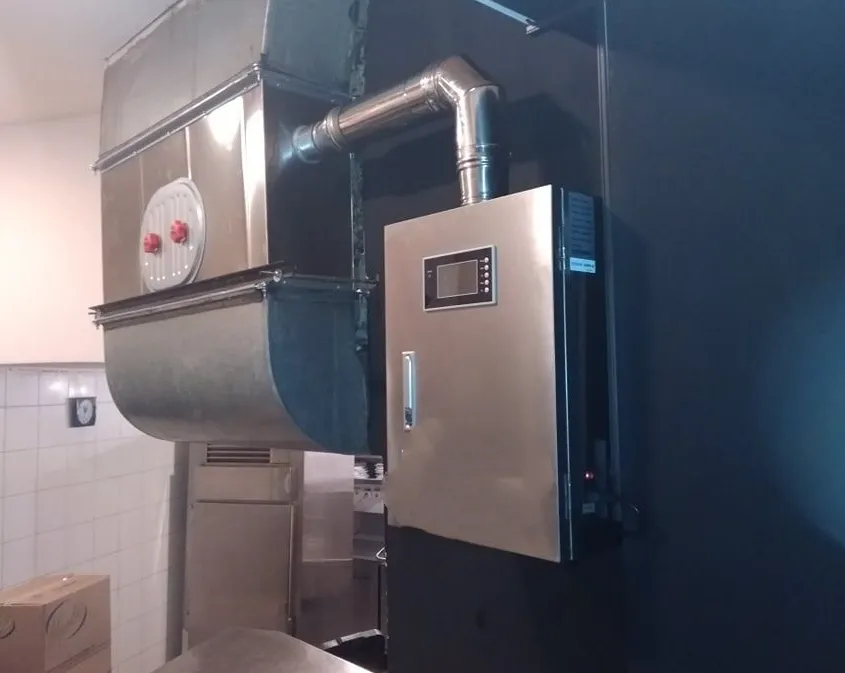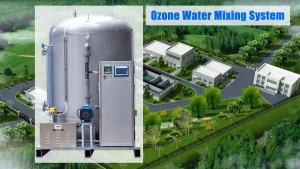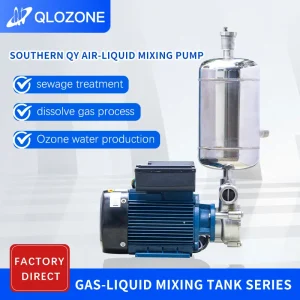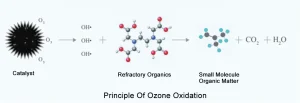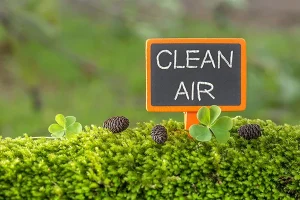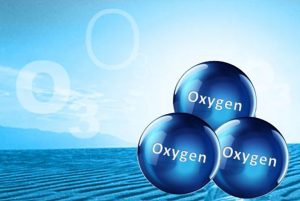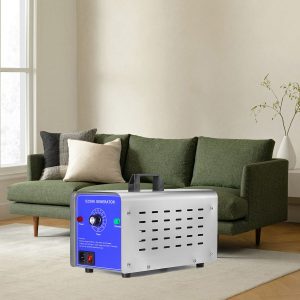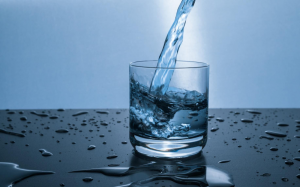O3 is a powerful oxidizer that will eliminate most odors, long-term exposure is not recommended agencies because it can contribute to eye and respiratory irritation.
Ozone appearance and odour:
Ozone is colourless at all concentrations experianced in the industry. It has a pungent characteristics odour usually associated with electrical sparks. The odour is generally detectable by the human nose at concentrations of 0.02 and 0.05 ppm.
Fire/explosion and hazard data:
Ozone is a powerful oxidising agent. Oxidation with ozone evolves more heat and usually ignites at a lower temperature than oxidising with oxygen. Ozone reacts with non-saturated organic compounds to produce ozonides, which are unstable and may decompose with explosive voilence. Ozone is an unstable gas that, at normal temperatures, decomposes to biatomic oxygen. At elevated temperatures and in presence of certain catalysts such as hydrogen, iron, copper and chromium, this decomposition may be explosive.
Reaction data:
Conditions contributing to instability
Ozone spontanenously decomposes under all ordinary conditions, so that is not normally encountered except in the immidiate vicinity of its production. Decomposition is accelerated by contact with solid surfaces, by contact with chemical substances and by the effect of heat.
Incompatibilities:
Ozone is a power oxidising agent and reacts with all oxidising materials, both organic and inorganic. Some reaction products are highly explosive.
In the event these units were creating the extremely high levels of output claimed, the ozone would be causing unseen damage to vulnerable materials like speakers, leather furniture, electronics and other materials. Once ozone reaches a certain level, degradation and deterioration of materials begins. Ozone can do great things, but as with any substance, too much or excessive levels will create problems. And extreme levels are not required for permanent odor removal. Moderation is the key to a successful ozone treatment.
Check the Warranty:
All ozone generators require periodic cleaning of the ozone producing elements to continue operating. Beware of units offered on the Internet that cannot be maintained by the buyer because they will stop functioning after a period of time. QLOZONE machine warranty is 1 year. Lifer time after-sales service.
In the event of an ozone leak:
Ventilate the area
Immediately switch the ozone generator off
Stop the flow of ozonated water:
Where high levels of ozone are experienced (in excess of 0.1ppm) all personnel should vacate the affected area until it has been thoroughly ventilated
When ozone levels in excess of 0.3ppm are present, or when personnel are required to work in restricted spaces or tanks, where ozone my be present, only persons wearing suitable breathing apparatus should be allowed in the area and the appropriate safe working practices for confined areas should be applied.
Distruction of waste ozone gas:
It is accepted practice, and required by statute in some jurisdictions, that Ozone gas should not be released into the atmosphere but should be destroyed using an approved ozone destruction method. (Catalytic, thermal, or absorption).
Safe handling of waste ozone gas:
All potential outlets of ozone gas into the occupied areas or external atmosphere should be identified.
All routine operational releases of ozone to the occupied areas or external atmosphere should be contained and passed through an ozone destruction system (as above)
All occupied areas where ozone is generated or applied should be provide with an effective ventilation system commensurate with the rate of ozone production and other risk factors
Where ozone is applied to liquids It is important to consider that ozone will escape from solutions under most conditions. Precautions include: ensuring that all vessels containing ozonated liquids are air-tight or under negative pressure to prevent escape of ozone. Any vents where ozone might escape should be connected to an ozone destruction system. Where ozonated liquids, such as used rinse water, are discharged this should be via close pipe work to close drains
Safety measures:
Eye exposure – If ozone gets into the eyes, wash immediately with large amount of water, lifting the upper and lower eye lids occasionally. Seek medical attention as soon as possible
Breathing – If a person breathes in large amounts of ozone, move the person into warm uncontaminated air at once. If the person has stopped breathing, perform artificial respiration. If breathing is difficult, properly trained personnel may assist by administering breathing oxygen. Keep the affected person warm and at rest. Seek medical attention as soon as possible.


